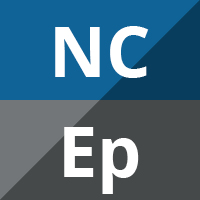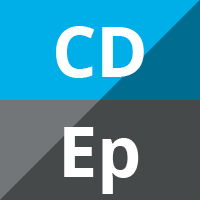
Care delivery and self-management strategies for children with epilepsy
Abstract Background Epilepsy is a neurological disorder affecting both children and adults. Epileptic seizures are the result of excessive and abnormal cortical cell electrical activity in the brain. In response to criticism that epilepsy care for children has little impact on long‐term outcomes, healthcare professionals and administrators have developed various service models and strategies to […]

Antiepileptic drug monotherapy for epilepsy: a network meta-analysis of individual participant data
Abstract Background This is an updated version of the original Cochrane Review published in 2017. Epilepsy is a common neurological condition with a worldwide prevalence of around 1%. Approximately 60% to 70% of people with epilepsy will achieve a longer‐term remission from seizures, and most achieve that remission shortly after starting antiepileptic drug treatment. Most […]

Pregabalin add‐on for drug‐resistant focal epilepsy
Abstract Background This is an updated version of the Cochrane Review last published in Issue 7, 2019; it includes two additional studies. Epilepsy is a common neurological disease that affects approximately 1% of the UK population. Approximately one‐third of these people continue to have seizures despite drug treatment. Pregabalin is one of the newer antiepileptic […]

Brivaracetam add‐on therapy for drug‐resistant epilepsy
Abstract Background This is an updated version of the Cochrane Review previously published in 2019. Epilepsy is one of the most common neurological disorders. It is estimated that up to 30% of individuals with epilepsy continue to have epileptic seizures despite treatment with an antiepileptic drug. These patients are classified as drug‐resistant and require treatment […]

Clonazepam monotherapy for treating people with newly diagnosed epilepsy
Abstract Background Epilepsy is one of the most common neurological disorders worldwide, with an age‐adjusted prevalence of 4 to 8 per 1000 population and an age‐adjusted incidence of 44 per 100,000 person‐years in developed countries. Monotherapy represents the best therapeutic option in people with newly diagnosed epilepsy. This is an updated version of the original […]

Antiepileptic drugs for the primary and secondary prevention of seizures after stroke
Abstract Background Seizures after stroke are an important clinical problem and may result in poor outcomes. The indications of antiepileptic drugs (AEDs) for seizure prophylaxis after stroke remain unclear. This is an updated version of the Cochrane Review previously published in 2014. Objectives To assess the effects of AEDs for the primary and secondary prevention […]

Rapid versus slow withdrawal of antiepileptic drugs
Abstract Background The ideal objective of treating a person with epilepsy is to induce remission (free of seizures for some time) using antiepileptic drugs (AEDs) and withdraw the AEDs without causing seizure recurrence. Prolonged usage of AEDs may have long‐term adverse effects. Hence, when a person with epilepsy is in remission, it is logical to […]

Carisbamate add‐on therapy for drug‐resistant focal epilepsy
Abstract Background Epilepsy is one of the most common neurological disorders. Many people with epilepsy are drug‐resistant and require add‐on therapy, meaning that they concomitantly take multiple antiepileptic drugs. Carisbamate is a drug which is taken orally and inhibits voltage‐gated sodium channels. Carisbamate may be useful for drug‐resistant focal epilepsy. Objectives To evaluate the efficacy […]

Topiramate monotherapy for juvenile myoclonic epilepsy
Abstract Background Topiramate is a newer broad‐spectrum antiepileptic drug (AED). Some studies have shown the benefits of topiramate in the treatment of juvenile myoclonic epilepsy (JME). However, there are no current systematic reviews to determine the efficacy and tolerability of topiramate in people with JME. This is an update of a Cochrane Review first published […]

Antiepileptic drugs for seizure control in people with neurocysticercosis
Abstract Background Neurocysticercosis is the most common parasitic infection of the brain. Epilepsy is the most common clinical presentation, though people may also present with headache, symptoms of raised intracranial pressure, hydrocephalus, and ocular symptoms depending upon the localisation of the parasitic cysts. Anthelmintic drugs, antiepileptic drugs (AEDs), and anti‐oedema drugs, such as steroids, form […]

